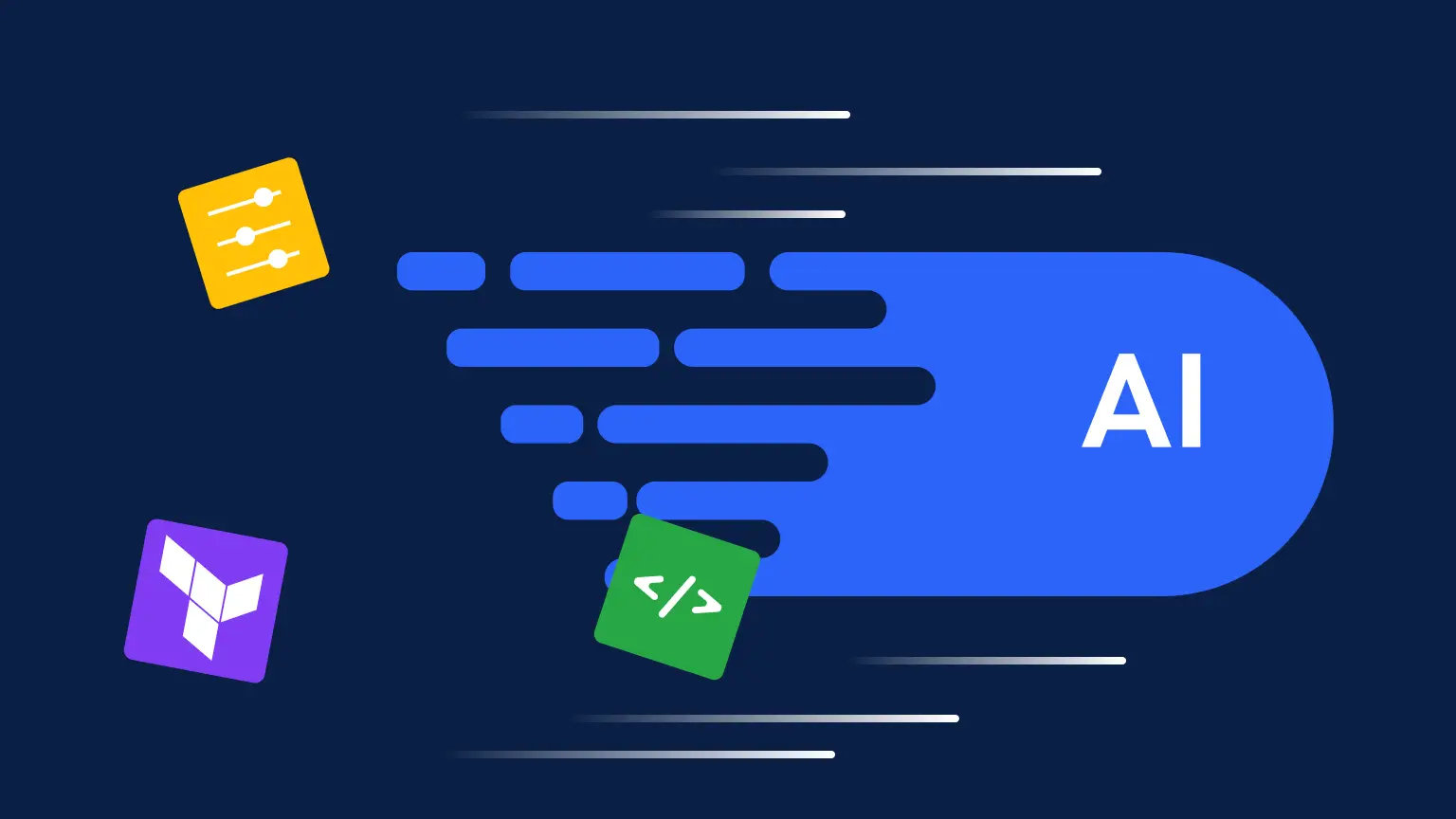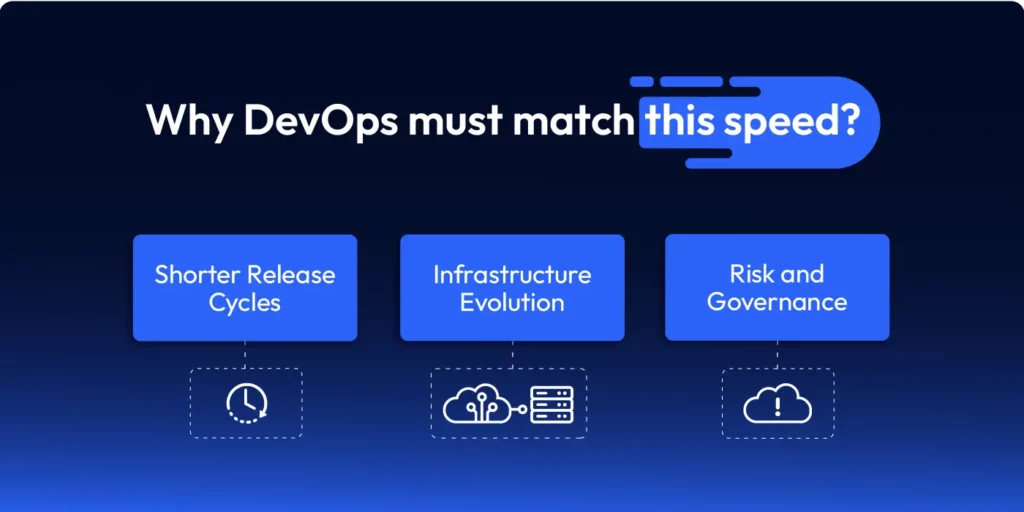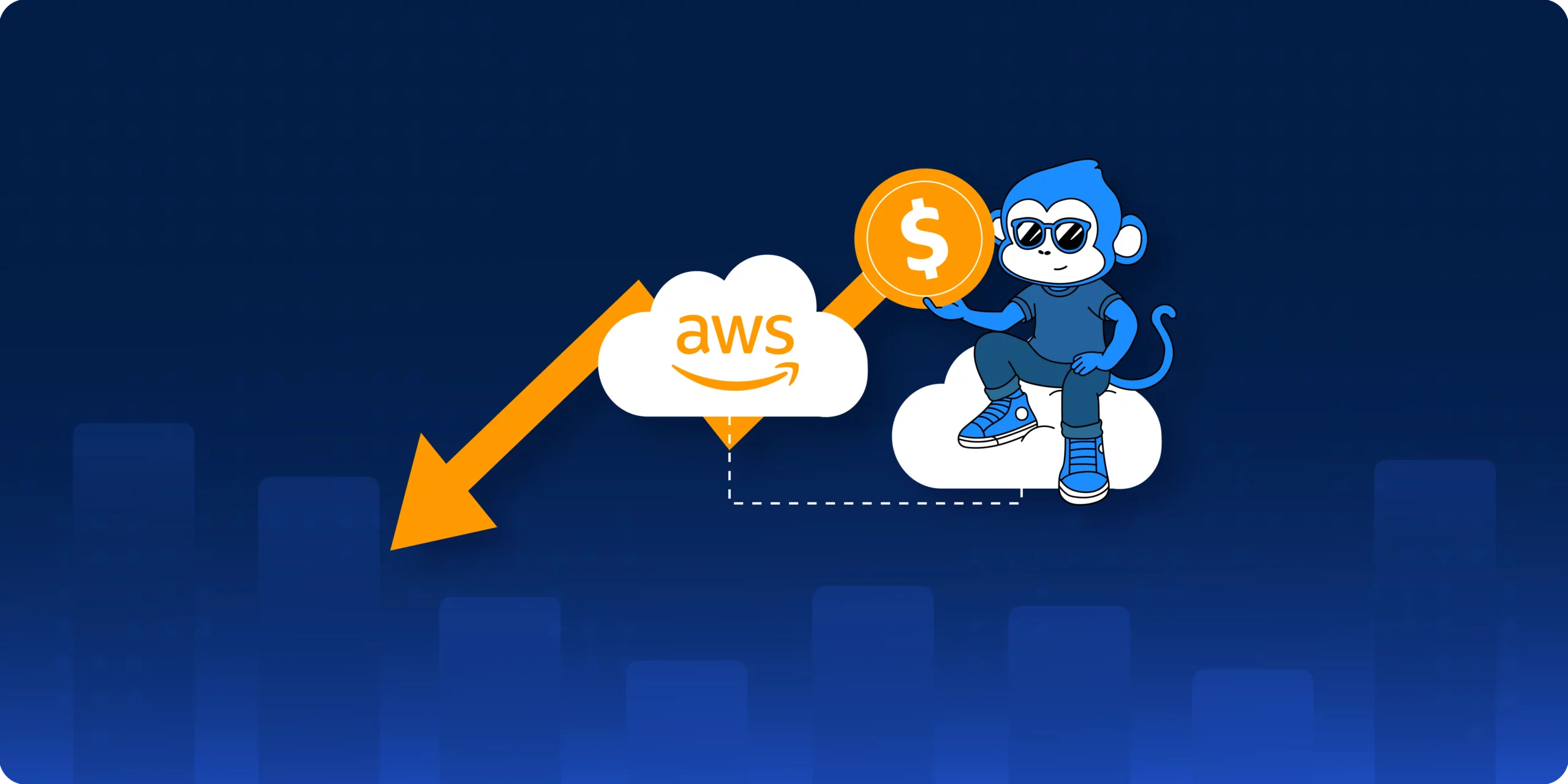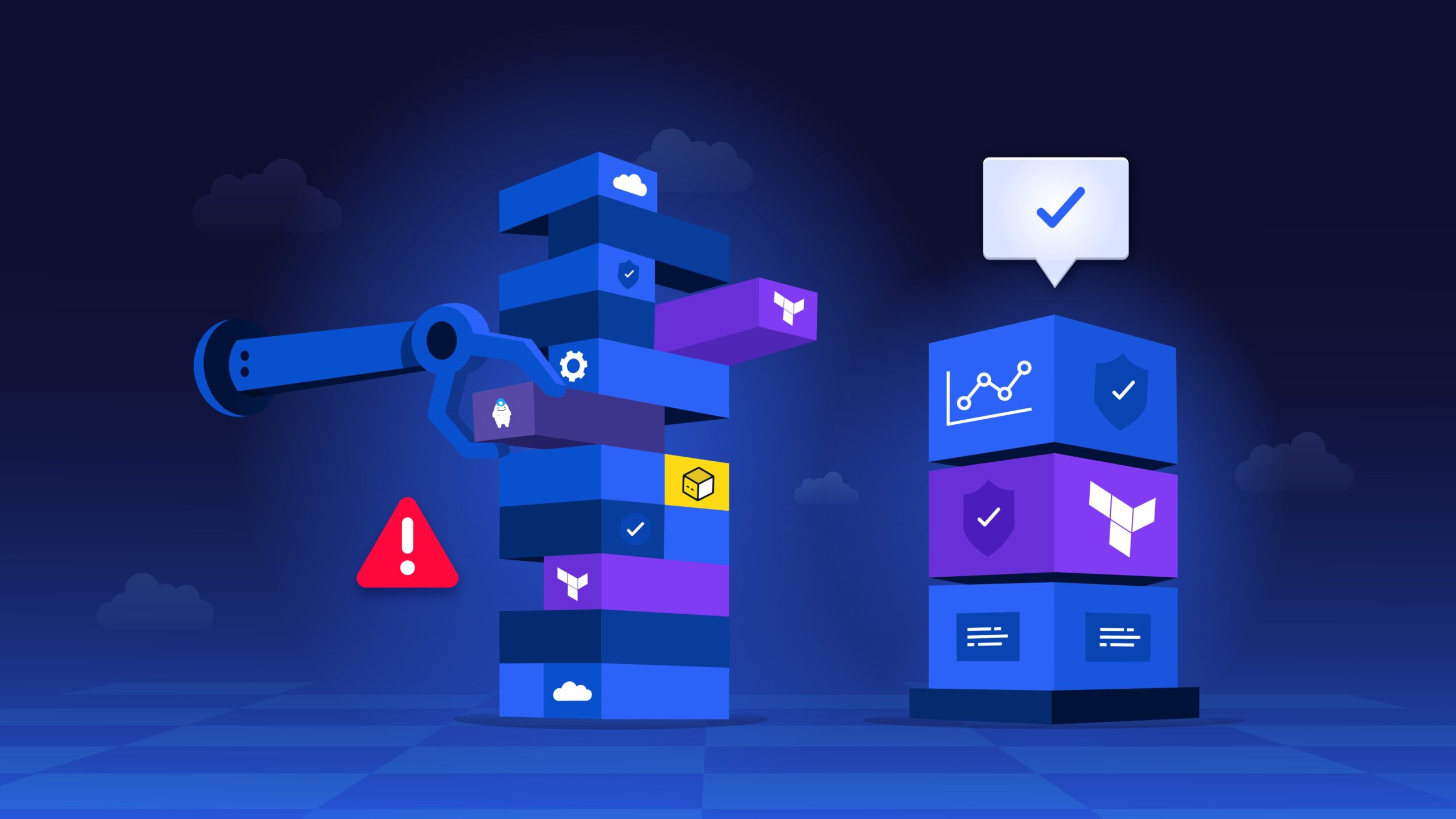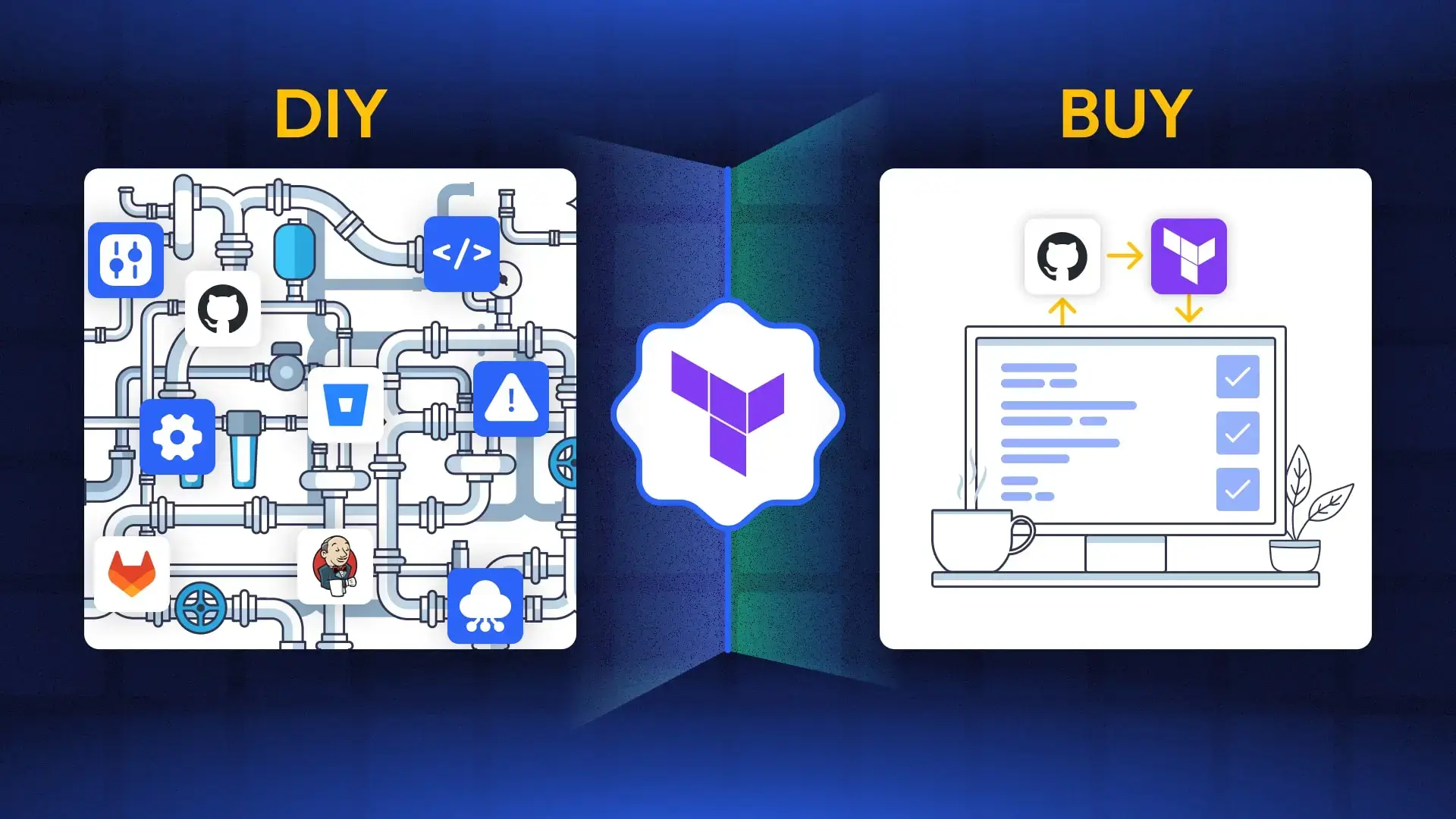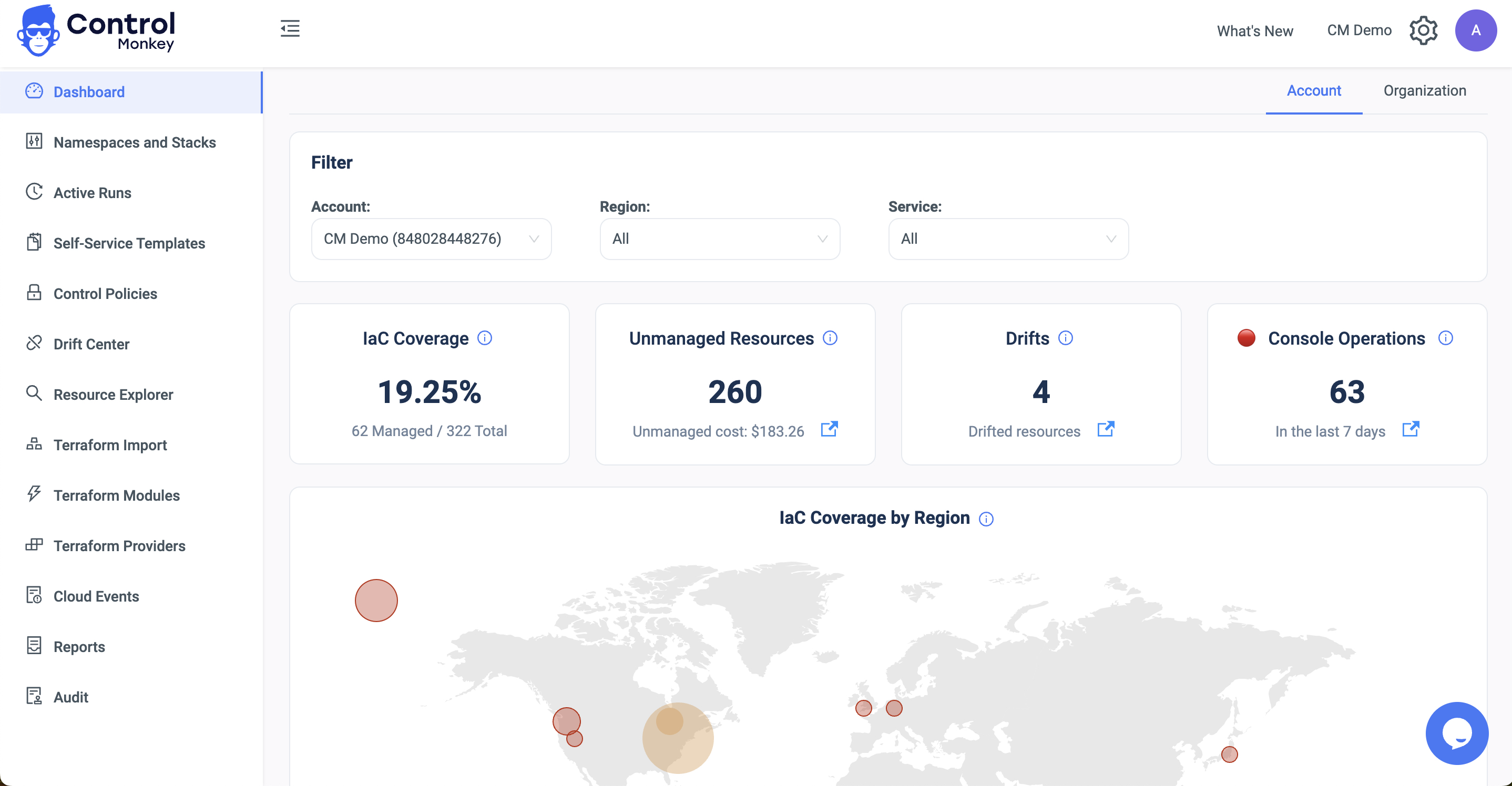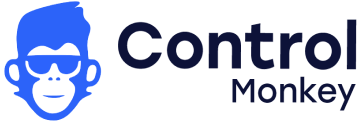Software development worldwide has seen a seismic shift recently, primarily brought about by the advent of Artificial Intelligence (AI).
AI has radically impacted software development, software testing, and deployment. As great as all of that has been, it also means that DevOps practices will have to adapt to match the frenetic pace of technology innovation. AI driven tools have sped up coding, software testing, and feature release, requiring DevOps teams to learn quickly and adapt rapidly.
In this article, we discuss the increasing necessity for DevOps to keep up with AI development cycles, why AI compels DevOps to speed up, and how solutions such as Terraform on AWS, cloud governance, and cloud cost optimization enter the picture to oversee the increasing velocity of software development.
A rapidly evolving software landscape
The software development cycle has changed significantly over the last decade.
The software was previously written, tested, and deployed in relatively slow cycles, constrained by the time it took to provision infrastructure and set up test environments. Today, with the introduction of AI tools, the software development world is seeing a revolution in how we write, test, and deploy features.
While AI technologies like intelligent coding assistants and automated coding are on an upward trend, development is also moving faster than ever before. These technologies make coding, testing, and releasing new functionality easier.
DevOps teams thus need to establish a proactive DevOps strategy to maintain this speed to make releases continuous, quick, and stable. For instance, an AWS-based development team utilizing Terraform to provision its environment needs to scale its cloud resources quickly and efficiently to accommodate frequent releases of new features.
What is DevOps AI?
DevOps AI refers to the integration of artificial intelligence tools into DevOps workflows. It enhances CI/CD pipelines, improves infrastructure management, and enables faster and more reliable software delivery through automation, predictive insights, and dynamic optimization.
AI-driven efficiency in development
When working with AI tools, it has proved to improve the overall developer efficiency. It has achieved this by:
Automated Code Generation and Intelligent Assistants:
Many IDEs have integrated automatic code completion tools right into their eco-system. For example, Visual Studio Code lets you integrate GitHub Copilot to enable seamless code generation as you write your code.
So, instead of manually typing every line of code, AI now provides suggestions and completes routine tasks. This AI-based code generation is a massive leap in speed and agility and allows the developers to focus on solving the issues at a higher level.
What is Vibe Coding and Why It Matters for DevOps?
Vibe coding refers to the use of AI to generate the code that is needed based on the developers requirement. Developers can simply say what they provide, high-level instructions, and the AI generates the code needed. This is a step towards low-code/no-code development platforms that are gaining traction within organizations.
Vibe coding is one way AI makes feature development faster and more efficient, shortening the time to develop a new feature and speeding up the release.
Developers no longer have to write code; they can describe what they require in natural-language terms, and the AI generates the required code. This has revolutionized how quickly features are produced when combined with CI-CD pipelines, automatically deploying them to cloud environments.
Infrastructure Demands:
The cloud infrastructure required by AI-powered features and tools must efficiently handle scaling and dynamically reallocate resources as the workload dictates.
Previously, infrastructure provisioning could take a long time, even when it was done manually. However, using Terraform on AWS, cloud infrastructure deployment can be automated and scaled based on the speedier release cycles. It is here that automation software like Terraform comes into the picture, enabling Infrastructure as Code (IaC) for immediate deployment and infrastructure management in the cloud. For instance, Terraform AWS can provision cloud infrastructure programmatically, and it’s easy to spin resources or nuke them as required without manual intervention.
Why DevOps must match this speed?
Increased development speed has created several challenges for DevOps teams.
With coding and testing driven by tools based on AI, deployment cycles become more rapid, and the DevOps pipeline is strained to keep up with it.
So, DevOps has to evolve to handle this pace because:
1. Accelerated Release Cycles
With the use of AI-driven development, release cycles shorten and become more frequent. AI-driven features need to be pushed rapidly to capture business opportunities. Developers will constantly push new code updates, and the CI-CD pipelines need to handle quick deployment without compromising the product’s quality.
2. Infrastructure Evolution
As AI models grow in complexity, the infrastructure requirements evolve as well. AI applications, especially those that train or infer models, need high computing resources.
DevOps must keep pace with provisioning and de-provisioning environments for workloads in a timely manner. Cloud providers like AWS, in the case of Terraform, offer services that allow the scaling of the infrastructure based on demand, something required to support AI-based applications.
3. Risk and Governance
As we accelerate development, there will be a growing need for risk and governance. AI systems, particularly sensitive data handling systems, must be governed tightly. This means ensuring security and controlling the ethical use of AI and regulation compliance.
Cloud governance ensures the operation of the infrastructure in compliance and, hence, the prevention of the misuse or access of resources. This includes implementing policies on who provisions the resources, data management, and expense management in the cloud.
Core Pillars for AI-Ready DevOps
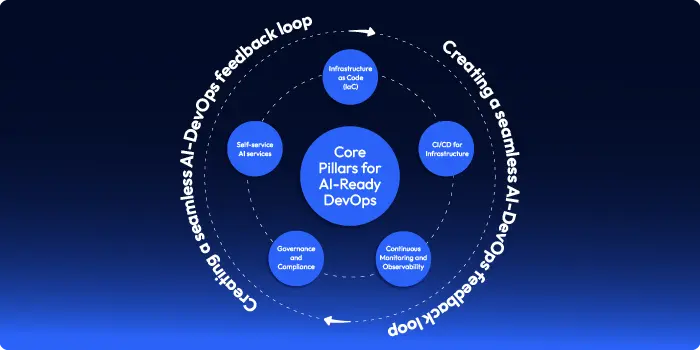
1. Infrastructure as Code (IaC)
Infrastructure as Code (IaC) allows DevOps teams to define infrastructure using code, which can be versioned and managed just like application code. This is imperative in the case of AI projects where environments need to be reproducible and consistent at scale.
Using Terraform for AWS, teams automate the provisioning of the infrastructure so that the resources get created uniformly across environments. The teams can provide the resources required to serve the AI models efficiently and quickly without manual configuration concerns.
|
1 2 3 4 5 6 7 8 9 10 11 |
resource "aws_s3_bucket" "ai_model_storage_s3" { bucket = "ai-models-bucket-s3" acl = "private" } resource "aws_instance" "ai-inference" { ami = "ami-0e449927258d45bc4" instance_type = "p4.2xlarge" subnet_id. = "subnet-0b9657c8ee1343d88" count = 5 } |
2.CI/CD for Infrastructure
Automation forms the backbone of DevOps-AI. CI and CD pipelines offer automated testing and deployment.
Terraform automates the deployment pipeline and manages and applies modifications to the cloud infrastructure, while Infrastructure CI/CD is automated.
For AI applications, it’s critical to incorporate those CI/CD pipelines with machine learning workflows. Model deployment needs to be automated to scale on cloud infrastructure in real-time to achieve high availability and efficiency demands.
|
1 2 3 4 5 6 7 8 9 10 11 12 13 |
stages: - build - deploy build: script: - terraform init - terraform plan - terraform apply deploy: script: - aws s3 sync ./models s3://ai-models-bucket-s3 |
3. Continuous Monitoring and Observability
Such AI-enabled applications need to be constantly monitored to ensure they perform optimally under varied loads. Real-time monitoring allows DevOps teams to catch and fix anomalies in time before they affect end users. With tools like AWS CloudWatch and Terraform integrations, DevOps teams can monitor AI models’ performance, detect errors, and perform quick rollbacks when needed.
4. Governance and Compliance
As deployment speed accelerates, enforcing cloud governance becomes critical to avoid misconfigurations, shadow infrastructure, and compliance drift. Tools like AWS Control Tower and AWS Organizations help teams apply consistent policies across accounts. For AI-driven environments, Microsoft outlines strategies for governing MLOps and GenAI pipelines, offering guidance on scaling responsibly while maintaining regulatory compliance.
5. Self-service AI services
Taking it a step further, data scientists and teams can also be provided with self-service AI tools by companies. This allows them to deploy and test the models at a faster rate without involving DevOps, thereby maximizing productivity and agility.
Creating a seamless AI-DevOps feedback loop
AI-DevOps environments demand tight feedback loops between data scientists, developers, and DevOps teams. Real-time performance monitoring and rapid user feedback are critical to continuously improving AI models and the infrastructure they run on. Platforms like AWS CloudWatch and tools that support AI-driven DevOps practices help identify anomalies early, trigger automated rollbacks, and enable continuous learning.
For the AI-based application, the services, along with AWS CloudWatch, might invoke an alert when the model’s performance drops below a given threshold level. The alert would then roll back automatically and initiate the process of improving the model.
Final Thoughts on DevOps AI
As AI transforms software development, the speed of coding, testing, and feature deployment needs to be matched by DevOps teams. DevOps teams use tools such as Terraform on AWS, cloud-level governance, and optimization of costs in the cloud to manage the infrastructure supporting AI-based applications without compromising security, costs, and compliance.
To do so, you can consider leveraging ControlMonkey in your development workflow. With ControlMonkey, you can generate IaC scripts on the fly with AI, help visualize and set up your infrastructure in just a simple click.
By doing so, DevOps teams will be able to handle the need for increased deployment cycles without affecting the quality or stability of the applications.

Frequently Questions I get asked a lot
Today, AI automates many development tasks, and this transformation is extending to DevOps as well — enabling the generation of Infrastructure as Code and managing governance and compliance at scale. Therefore, AI is not a threat but rather a force multiplier for DevOps, helping to reduce costs while increasing productivity.
AI can be used in DevOps for generating Infrastructure as Code, automating testing, detecting anomalies and drift, enabling predictive scaling, and enhancing the reporting capabilities of monitoring tools.
AI can automate many repetitive tasks, but core DevOps functions — such as governance, infrastructure orchestration, and team coordination — still require human oversight and context-aware decision-making.
AI cannot fully replace the role of a DevOps professional. While AI tools can assist engineers with automation and insights, they cannot substitute the judgment, domain expertise, and cross-functional collaboration skills that DevOps professionals bring to the table.
DevOps as a practice continues to evolve with AI, but it won’t be replaced. Instead, AI serves as a powerful tool that DevOps engineers leverage to manage the growing complexity and pace of modern software delivery.



